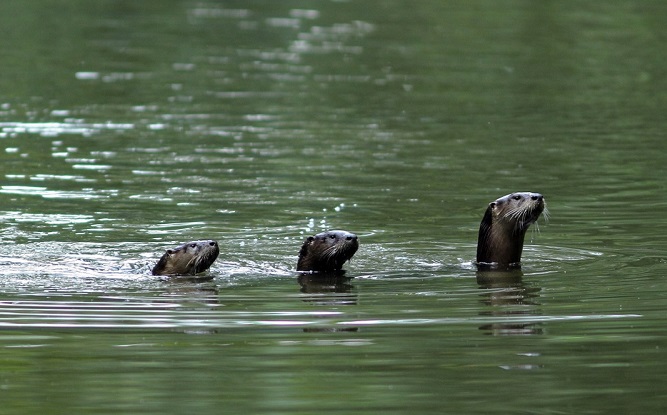Coal Ash Threat Dead Ahead!
An Illinois natural treasure and a coal ash threat.
(River otter photo by David Hale) ![]() April 29, 2018 – If you’ve been down to the Kickapoo State Recreation Area in east central Illinois, you know that the MIddle Fork of the Vermilion River is notable for its beauty, its ecological diversity and its myriad opportunities for recreation. Kickapoo State Park itself attracts more than one million visitors per year. In a recent press release, the Prairie Rivers Network writes,
April 29, 2018 – If you’ve been down to the Kickapoo State Recreation Area in east central Illinois, you know that the MIddle Fork of the Vermilion River is notable for its beauty, its ecological diversity and its myriad opportunities for recreation. Kickapoo State Park itself attracts more than one million visitors per year. In a recent press release, the Prairie Rivers Network writes,
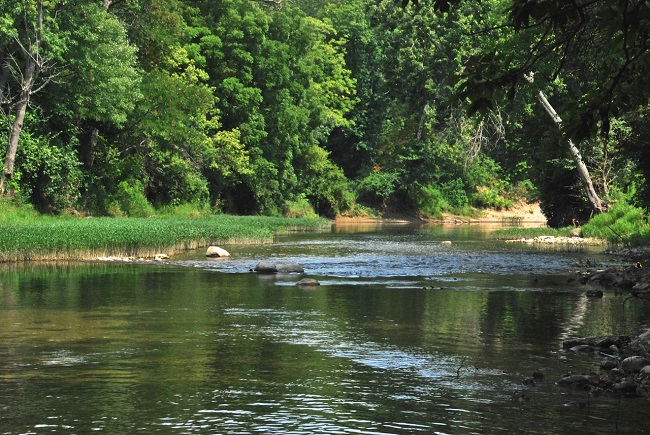 Flanked by nearly 10,000 acres of public land, the Middle Fork of the Vermilion is home to the blue breast darter and silvery salamander, as well as 22 other threatened or endangered species. An archeological site along the river’s east bank is listed on the National Register of Historic Places and includes 1,000-year-old burial mounds.I
Flanked by nearly 10,000 acres of public land, the Middle Fork of the Vermilion is home to the blue breast darter and silvery salamander, as well as 22 other threatened or endangered species. An archeological site along the river’s east bank is listed on the National Register of Historic Places and includes 1,000-year-old burial mounds.I
Adding to its mystique, the Middle Fork of the Vermilion is the state’s only officially designated wild and scenic river. Unfortunately, it is now being acknowledged for a more dubious distinction. On April 9, it was named one of America’s Most Endangered Rivers® of 2018 by the American Rivers organization. Incidentally, 2018 marks the 50th anniversary of the Wild and Scenic Rivers Act.
The threat to this great Illinois river can be summed up in two words: coal ash, sometimes known as coal combustion residuals or CCR. The story goes back fifty-five years to the construction of the Vermilion Power Generating Station, a coal-fired power plant, that was built by Illinois Power along the west bank of the Middle Fork of the Vermilion River in 1956. It was purchased by the energy company Dynegy in 2000, which operated the plant until 2011, when it was decommissioned.
Eco-Justice Collaborative (EJC), a group that was heavily invested in the fight that eventually closed the Fisk and Crawford coal power plants in Chicago (among other initiatives), is now working hard with American Rivers and Prairie Rivers Network to prevent a coal ash catastrophe from happening along the Middle Fork. In a meticulously detailed FAQ page, EJC explains the danger facing this priceless Illinois natural area:
Over the 55-year period that the facility produced electricity, plant operators needed a place to store coal ash, the waste material produced from burning coal. They determined they could construct storage for this waste near the power plant by using the existing bluffs along the west side of the river as one “wall” for containment, and building berms to the east next to the river channel, to create a second “wall”. While this solution allowed plant operators to take advantage of existing topography, this siting also placed the three storage pits directly in the Middle Fork’s floodplain, which is an integral part of the river’s natural water conveyance system.
So if it’s just ash, what’s the problem? EJC continues,
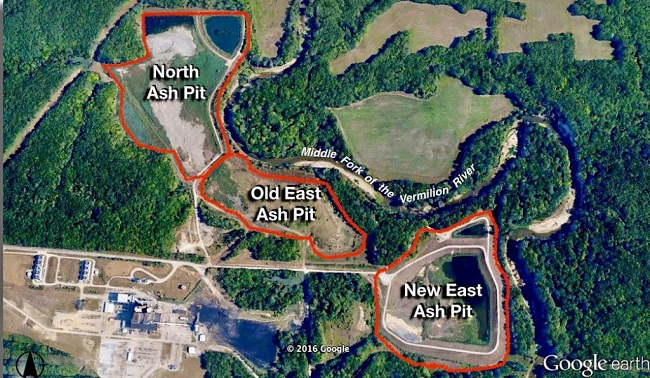 Coal ash can contain many harmful chemicals, such as arsenic; mercury; cadmium; chromium; selenium; aluminum; antimony; barium; beryllium; boron; copper; lead; manganese; molybdenum; nickel; vanadium; and zinc. These have been shown to cause birth defects, cancer, and neurological damage in humans – and can harm and kill wildlife, especially fish.
Coal ash can contain many harmful chemicals, such as arsenic; mercury; cadmium; chromium; selenium; aluminum; antimony; barium; beryllium; boron; copper; lead; manganese; molybdenum; nickel; vanadium; and zinc. These have been shown to cause birth defects, cancer, and neurological damage in humans – and can harm and kill wildlife, especially fish.
Since 2011, 3.3 million cubic yards of coal ash have been sitting in three separate pits along the Middle Fork. And, if you look at the map above that highlight the locations where the coal ash is contained (which is a relative term, as we shall see), you might conclude that an evil genius had placed the toxic residue in areas that were specifically designed to fail and spread contaminants into the river and into the surrounding area.
Will that happen? According to EJC,
All three pits are unlined. The two oldest storage areas, the North Ash Pond and the Old East Ash Pond are leaking. The third, the New East Ash Pond, was constructed on top of the existing bedrock (shale). Although its sides are lined with clay and trenched into the bedrock (diked ring), it is not considered a lined facility by the U.S. EPA.
Furthermore, there is a history of coal ash pit failures in the United States. In December of 2008, more than a billion gallons of coal fly ash slurry were released at the Tennessee Valley Authority’s Kingston Fossil Plant, which resulted in the inundation of some 300 acres. That accident is considered one of the largest industrial spills in U.S. history.
Worse, though, is a recent report that clean up workers at the Kingston site were not alerted to the dangers of constant exposure to coal ash and that “more than 150 of the 900 workers employed at the height of the years-long clean up are dying or are dead, according to court records.”
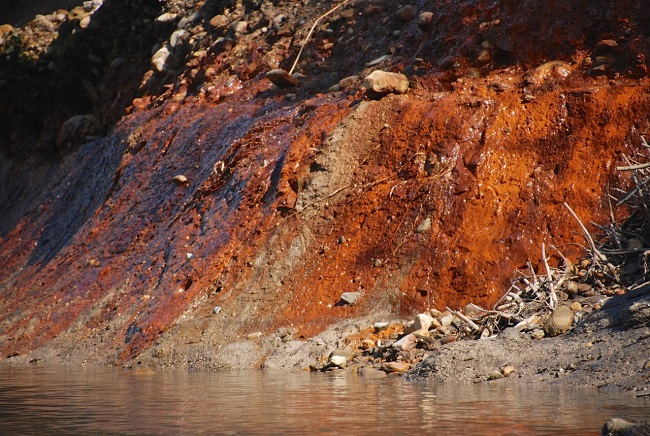 In February of 2014, some 39,000 tons of coal ash spilled from the retired Dan River power plant in Eden, about 130 miles northeast of Charlotte near the Virginia state line.
In February of 2014, some 39,000 tons of coal ash spilled from the retired Dan River power plant in Eden, about 130 miles northeast of Charlotte near the Virginia state line.
So, to get back to the question “Could that happen in Illinois?” the answer is…
Of course it could! What do you think?!
Sorry. Sometimes I get carried away. So, is our government looking out for us? I could just start shouting again, but instead I’ll tell you that, stunningly, until 2015 there were no federal regulations regarding coal ash disposal. That’s when the Obama Administration stepped in and its EPA issued some basic regulations–called the CCR Rules–that the Washington Post at the time considered to be weak tea.
Companies will have to meet engineering and site requirements designed to protect water supplies and air quality. They will have to line new pits to prevent seepage. They will have to monitor local water quality. And they will have to release more information to the public. Waste sites that can’t comply will have to close.
Or at least that’s the idea. Environmental activists warn that the EPA declined to classify coal ash as hazardous waste, a designation that would have triggered stricter federal oversight. Instead, coal ash is officially “solid waste.” Among other things, the EPA is largely leaving enforcement to the states, which have been the only overseers before now, though private citizens and environmental groups will be able to sue to demand adherence to the rules.
Fast forward to 2018 and an EPA under the thumb of the ethically-challenged Scott Pruitt and–guess what? Those basic rules are about to go away.
The EPA said its rule changes would save the utility industry between $31 million and $100 million a year. But a newly appointed environmental justice adviser to the agency says disadvantaged communities will bear the brunt of those savings.
No word yet on how much that will cost the environment, the disadvantaged and future generations.
All of this is a lot to digest, so we will have three experts helping us on our journey this morning. Pam & Lan Richart are co-directors of Eco-Justice Collaborative, and long-time friends of The Mike Nowak Show. They sold their land use and environmental planning firm to focus on justice in environmental work and find ways to draw attention to climate change. In 2014, they moved from Chicago to Champaign, Illinois to work with downstate communities impacted by coal mining.
They are joined by Andrew Rehn, water resources engineer with Prairie Rivers Network. He has created a terrific interactive map of coal ash sites in Illinois. Yes, unfortunately, there are other locations in the state. The map shows all of the major power plants with coal ash impoundments in Illinois. Rehn says that specific impoundment details including liner status, hazard risk, and breach maps, are available for each impoundment by clicking on any particular impoundment on the map.
One more thing. If you want to get involved, there is still time to submit a comment to the EPA that opposes reconsideration of the 2015 Coal Ash Rule before the April 30 public comment deadline. You can do that here.
The Wisconsin Vegetable Gardener is…or are…back!
I don’t live in Wisconsin, but you probably couldn’t prove it by the spring of 2018. Pretty much anybody who lives in the northern tier of the United States east of the Rockies knows what I’m talking about. Even our meteorologist Rick DiMaio, who I think has a “climate variability” tattoo someplace, has been taken aback by the cold weather.
It has had a decided effect on the early part of the baseball season–a record 28 games have already been postponed because of snow, rain, or cold temperatures. And that’s not all:
Corn planting hasn’t even begun yet in eight states – Ohio, Minnesota, South Dakota, North Dakota, Iowa, Michigan, Pennsylvania and Wisconsin – where it was well underway a year ago, according to the USDA.
In Illinois, Bob Bleuer and his son, Jeff, are two weeks late getting to his frigid 1,800 acres.
“The soil temperature’s not warm enough,” Jeff said. The ground thermometer was stuck in the 30s last week, 20 degrees below what a seed needs.
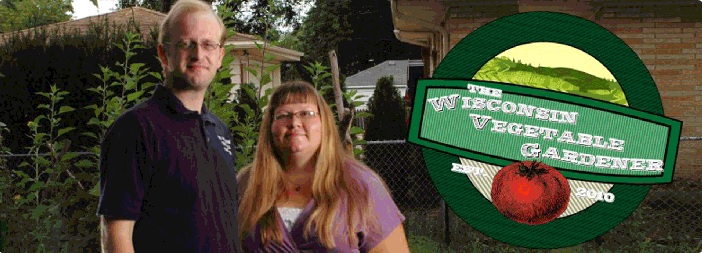
Which brings us to two of our favorite gardeners, who know something about growing in cold climes. I refer, of course, to The Wisconsin Vegetable Gardener. The title is singular but there are two of them–the husband and wife team of Holly and Joey Baird.
They grow in the ground, raised beds, straw bales, containers and indoor herbs and even a dwarf lime tree they have year round in their kitchen!
Their goal through their videos and social media pages is to show the average person how easy it is to grow food, store food, and reuse everyday items. Their motto is “grow with us”.
Joey and Holly enjoy speaking at garden expo’s throughout the midwest. Holly is also an award winning home canner with a handful of ribbons from the Wisconsin State Fair including a Best of Show award for her home canning talents.
Together, they’ve produced more than 1,100 videos (!) and countless podcasts, they make public appearances and they answer thousands of gardening questions. And, last year, they launched their live radio program in Milwaukee at WNOV 860AM and W293CX 106.5 FM, “The Voice.” You can catch them for Season 2 every Saturday morning from 9-10am Central Time from March 3 through October 27.
Hmm…they take a break for about four months. Maybe it’s time to talk to Peggy about that.
Anyway, they’re back on the show this morning to talk to us about gardening and to answer any questions you might have about preparing your soil or getting seeds started or when to put seedlings out or composting or growing crops in straw bales.
Call in your questions to 877-711-5611, or drop us a line on Facebook, Twitter or Instagram.

